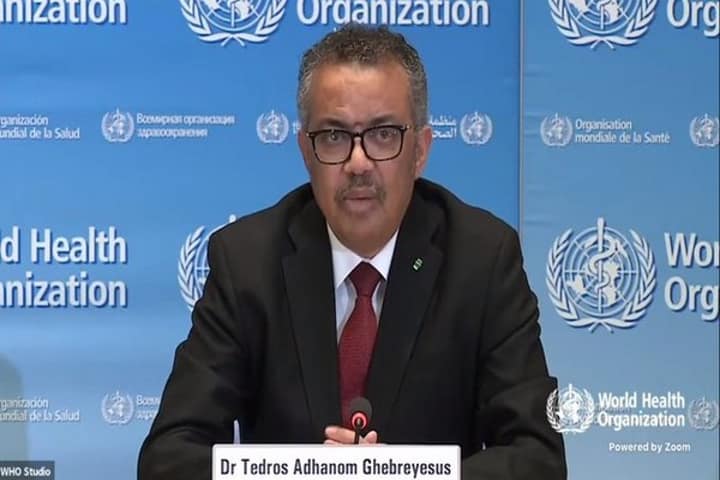

The World Health Organisation rebuked Chinese officials for withholding scientific research that may reveal the origin of the coronavirus (Pic. Courtesy ANI)
Washington: The World Health Organisation rebuked Chinese officials for withholding scientific research that may reveal the origin of the coronavirus, The New York Times reported.
The WHO, on Friday (Local time) also asked the Chinese official about the reasons behind not revealing the data three years ago and why, after it was published online in January, it could not be found now. Before the data got vanished into the internet space, an international team of virus experts downloaded and began analysing the research. The team revealed that the data supports the idea that the pandemic could have begun from the illegally traded raccoon dogs, which infected the humans at China’s Wuhan Huanan Seafood Wholesale Market.
But the team couldn’t reach the final result as the gene sequences were removed from a scientific database once the experts offered to collaborate on the analysis with their Chinese counterparts, according to The New York Times.
“These data could have — and should have — been shared three years ago,” Dr Tedros Adhanom Ghebreyesus, the WHO’s director general, said. The missing evidence now “needs to be shared with the international community immediately,” he said.
According to the expert team, which was reviewing the data, the research offers evidence that raccoon dogs, fox-like animals known to spread coronaviruses, had left behind DNA in the same place in the Wuhan market that genetic signatures of the new coronavirus also were discovered.
To some experts, that finding suggests that the animals may have been infected and may have transmitted the virus to humans.
With huge amounts of genetic information drawn from swabs of animal cages, carts and other surfaces at the Wuhan market in early 2020, the genetic data had been the focus of restless anticipation among virus experts since they learned of it a year ago in a paper by Chinese scientists, reported The New York Times.
Meanwhile, a French biologist discovered the genetic sequences in the database last week and her team began mining for clues about the origins of the pandemic.
That team has not yet released a paper outlining the findings. But the researchers delivered an analysis of the material to a WHO advisory group studying Covid’s origins this week in a meeting that also included a presentation by Chinese researchers regarding the same data.
The analysis seems to be different from what China has presented, according to Sarah Cobey, an epidemiologist and evolutionary biologist at the University of Chicago.
Cobey, who was not involved in the latest analysis said that the analysis, seemed to clash with earlier contentions by Chinese scientists that samples taken in the market that were positive for the coronavirus had been ferried in by sick people alone, The New York Times reported.
“It’s just very unlikely to be seeing this much animal DNA, especially raccoon dog DNA, mixed in with viral samples if it’s simply mostly human contamination,” Dr Cobey said.
Questions remain about how the samples were collected, what precisely they contained and why the evidence had disappeared. In light of the ambiguities, many scientists reacted cautiously, saying that it was difficult to assess the research without seeing a complete report.
The idea that a lab accident could have accidentally set off the pandemic has become the focus of renewed interest in recent weeks, thanks in part to a fresh intelligence assessment from the Department of Energy and hearings led by the new Republican House leadership.
But a number of virus experts not involved with the latest analysis said what was known about the swabs gathered in the market buttressed the case that animals sold there had sparked the pandemic, as per The New York Times report.
“It’s exactly what you’d expect if the virus was emerging from intermediate or multiple intermediate hosts in the market,” Dr Cobey said, adding, “I think ecologically, this is close to a closed case.”
Dr Cobey was one of 18 scientists who signed an influential letter in the journal Science in May 2021 urging serious consideration of a scenario in which the virus could have spilt out of a laboratory in Wuhan.
The World Uyghur Congress (WUC) has vehemently opposed the current social media spread of propaganda…
Flipkart, India's leading e-commerce platform has decided to relocate its holding company from Singapore to…
Union Minister of Heavy Industries and Steel H D Kumaraswamy welcomed the decision of the…
As Prime Minister Narendra Modi embarks on a crucial two day visit to Saudi Arabia…
By Ishaan Prakash Almost everywhere one looks, China is ramping up pressure against neighbours and…
Federal Bureau of Investigation Director Kash Patel on Monday (local time) assured that justice will…